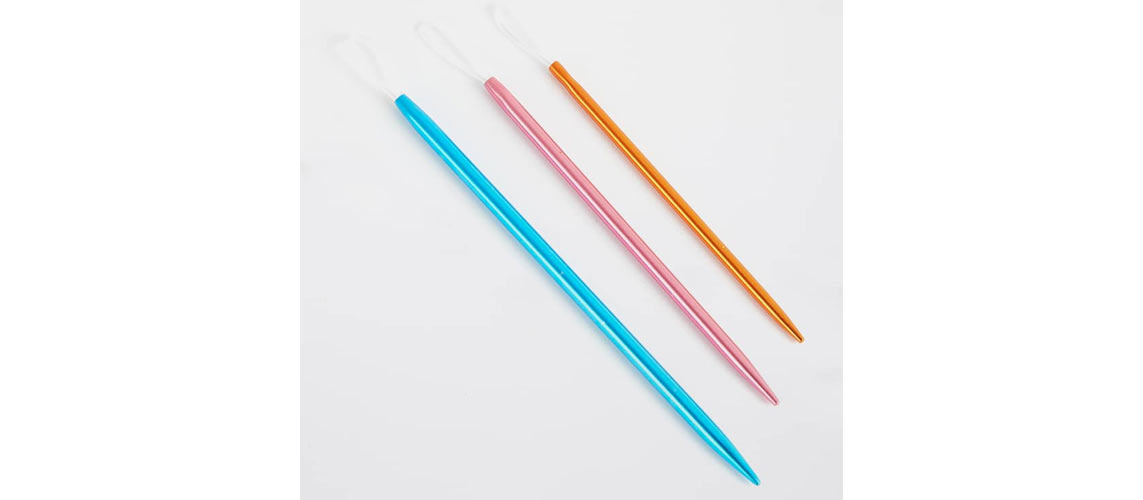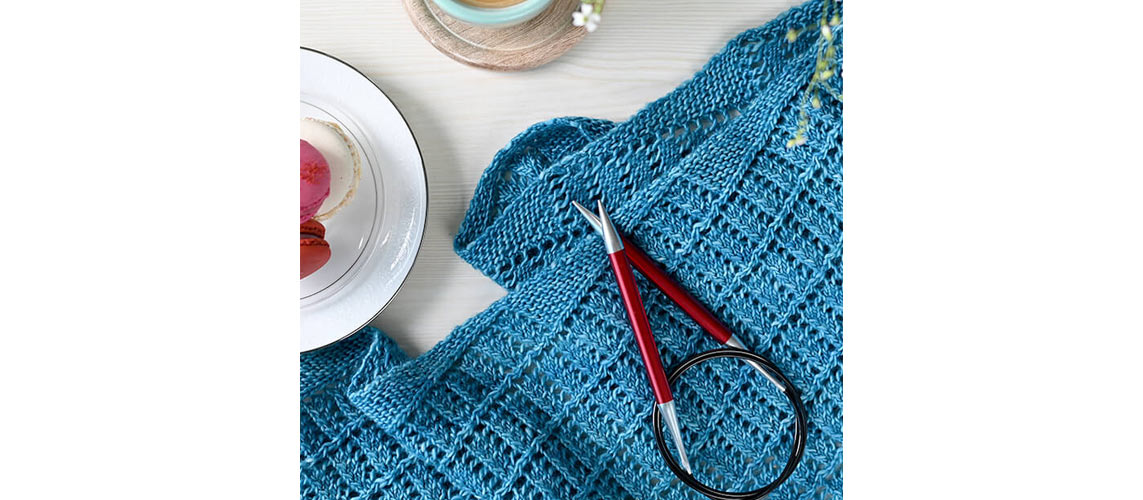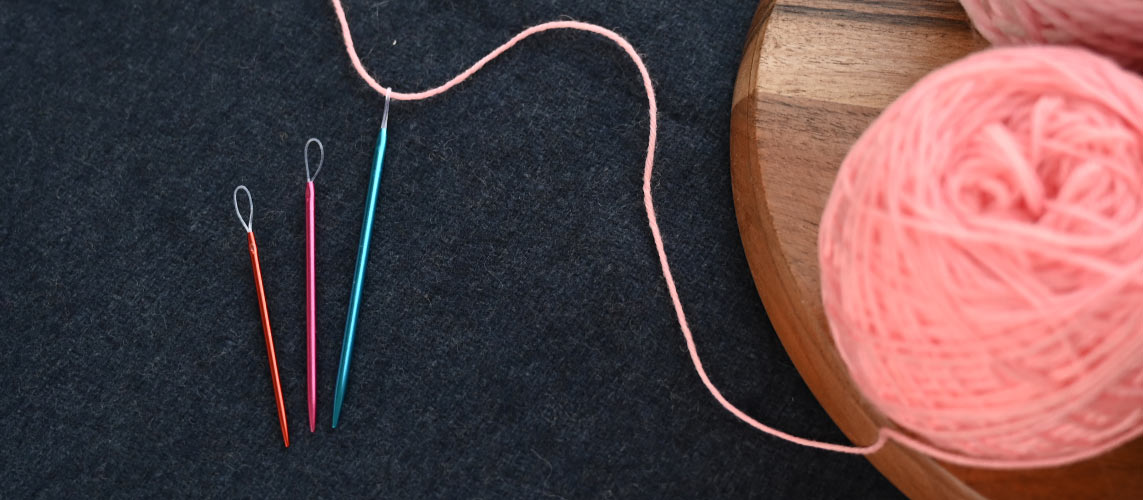Hanging or any stubborn yarn that comes out from the garment we have completed is really annoying. Using a tapestry needle to solve this issue is a fantastic and long-term fix. It will give your creation a polished, professional look—something we all strive for. Tapestry needles are an essential part of any knitter's or crocheter's toolkit, much like knitting needles and crochet hooks. They give a sense of accomplishment for any endeavor, knitting or crocheting.
However, what really is a tapestry needle, and what makes them so crucial? Let's explore!
A Tapestry Needle: What is it?

Another name for a tapestry needle is a darning needle and occasionally a wool needle. It is intended to be used with yarn for crafts like crocheting and knitting. The salient characteristics are outlined below:
Large Eye: A tapestry needle has a large eye that can readily accommodate even thick or bulky yarn, unlike a sewing needle that has a tiny eye. This facilitates the process of threading a needle with yarn.
Blunt Tip: This needle has a rounded, blunt tip instead of a pointed one like regular needles. Because of its bluntness, the needle won't break or harm the yarn fibers when it goes through stitches.
Long & Flexible Body: These wool needles are typically longer and have a more flexible nature than regular sewing needles. This allows for greater control and easy maneuvering when working the yarn. Especially in tight spaces or around curves.
This needle comes in various sizes, so it’s important to choose one that suits the weight of your yarn. They may have straight or bent tips, with bent tips being helpful in navigating tight spaces in intricate projects.
What are the uses of the Tapestry Needle?

Unlike sewing needles, tapestry needles are specifically designed to work with yarn. Here’s why they deserve a permanent spot in your crafting sessions.
The Star for Weaving in Ends
After meticulous hours of crafting, there comes a time to snip the yarn. And you just do that without even realizing it threatens to unravel. Your loops can easily come out and unravel the entire project. There comes the role of “darning needle”. Instead of snipping the yarn, you just weave it in. This allows you to weave those yarn ends discreetly back into your projects, creating a clean and secure finish that makes your creation look professionally done.
Sewing Seams like a Pro
Crocheting projects like blankets, bags, or stuffed animals often involve sewing pieces together. While some techniques use crochet hooks for joining, tapestry needles offer more versatility. With this needle, you can whip-stitch seams, sew on appliques, or even create intricate embellishments on your project.
Fixing Mistakes with Finesse
It's a fact that even the most careful crafters sometimes make mistakes—a snag here, a dropped thread there. These minor flaws are a necessary component of learning. But before you give up, don't forget about one of your reliable knitting accessories the tapestry needle.
Because of its blunt tips, it's ideal for gently darning tiny holes and picking up dropped stitches in your knit or crochet projects. Using your darning needle and a few easy stitches, you can bring your creation back to life and hide any signs of the mishap.
Their versatility makes them a valuable addition to any crafting tool kit. You can even use them for;
- Sewing buttons onto your knitted or crocheted creations.
- Attaching ribbons or other embellishments to personalize your projects.
- Mending delicate fabrics where a blunt needle is preferred.
A wool/tapestry needle comes in various sizes, shapes, and materials. It's often advisable to pick one that is somewhat larger than the yarn to make it easier to insert it.
Therefore, remember the power of a darning needle the next time you visit the craft store. Although it may not be as extravagant as knitting needles and crochet hooks, its functions make it just as important.












